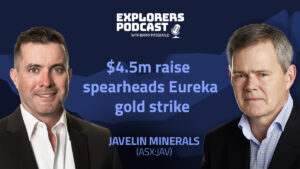Why mill access can turn gold explorers into fast earners

Turning gold into cash flow, one truck load at a time. Pic: Getty Images
- Proximity to gold mills gives explorers faster production options through toll treatment or ore-purchase deals
- TG Metals is eyeing toll treatment deals by year-end with its Van Uden project sitting close to multiple processing facilities in WA’s Forrestania Belt
- We’ve outlined some other ASX goldies within close proximity to mills throughout WA’s gold districts
For gold explorers, being near a mill can mean the difference between years of waiting and fast-tracked production – without it, even the best grade deposits can languish while companies scramble to find the funds needed to build their own plant.
Toll treatment deals and ore-purchase agreements allow juniors to slot into existing infrastructure, turning discoveries into cash flow without the heavy upfront capital burden.
It also adds flexibility, allowing juniors to start small by trucking ore to a neighbour’s mill while continuing to drill out something of scale, keeping the story moving and the market engaged.
And it’s not just about cost savings, being within trucking distance of an operating or even mothballed mill gives explorers a bargaining chip in corporate discussions, making them more attractive as M&A targets to bigger players looking to keep plants running at capacity.
This approach doesn’t always work out.
The model can squeeze margins as mill fees eat into profits. For toll treatment to stack up, grades need to be solid and gold prices need to be healthy. But with prices at record highs of US$3800/oz and rising, toll treatment and ore sales agreements look increasingly attractive.
TG Metals eyes toll deals to fast-track cash flow
With sealed road access to multiple processing facilities including Marvel Loch and Westonia, TG Metals (ASX:TG6) has locked in one of the Forrestania belt’s key gold positions through its $4m Van Uden acquisition in April 2025.
TG6 CEO Dave Selfe told Barry FitzGerald on The Explorers Podcast earlier this month the company’s timing couldn’t have been better.
“We started the (Van Uden acquisition) process back at the end of October last year,” he said.
“In the meantime, of course, the gold price just kept going up and up and up, and it’s still rising now.
“Timing is everything in this game, and we seem to have caught it just before things really took off.”
Selfe added that the strength of the market underpins the strategy.
“Gold’s at record levels, stunning margins on offer if you can get into production, and this Van Uden pickup looks like it’s got those sorts of credentials.”
The company is targeting toll treatment agreements before year-end, with 100,000t of historical stockpiles and material from the Tasman pit ready for immediate processing, offering a pathway to cash flow while deeper drilling expands the resource.
“The pathway to fastest production is to toll treat or purchase,” he told FitzGerald.
“We are quite close to the Marvel Loch gold plant to the north of us, who incidentally, the owners of that… also have 20% of the project as well.
“So, that sort of looks like more of a natural home.”
Options abound
Van Uden is only 90km by sealed road from Marvel Loch and another 124km to the southeast of Westonia. That’s where Ramelius Resources continues to sit on the mothballed Edna May mill, with a couple other potential plants to the south as well.
That proximity gives TG flexibility, as even the company’s stockpiles could be monetised sooner than expected.
“We’ve drilled those and we’re just waiting on metallurgical test work… we’ll probably have circa 100,000 tonnes available between that and the bottom of Tasman pit for a toll milling parcel that we can provide to a plant,” Selfe said.
Even in the longer term, the company sees additional low-capex options.
“In the early days of the 1990s, there was some heap leach test work that was done on the Van Uden laterites, and that’s always a potential for us in the future as well, perhaps even getting a low capital cost heap leach established,” he said.
The Van Uden deposit has already delivered a JORC 2012 resource of 227,000oz, but Selfe sees far more to come considering the deposit has only been shallowly drilled down to 148m.
“There’s plenty of upside on the down dip on the Van Uden deposit and also along strike as well,” he said.
“We’ve got up to 200 holes planned at Van Uden, so it’ll be there for quite some time. We’re even going to have some diamond drilling later in the year on holes greater than 200 metres depth,” Selfe explained.
Goldies of the Murchison leveraging nearby mills
Selfe’s comments cut to the heart of why location matters – trucking distance to a working mill can transform a junior explorer from a speculative play into a near-term producer.
And TG6 isn’t alone in this advantage.
Odyssey Gold (ASX:ODY) has built its strategy around leveraging mills in the Murchison, where stranded ounces can suddenly become economic if processing is just down the road.
The company’s Tuckanarra gold project sits about 40km southwest of Monument Mining’s Burnakura processing plant, where the two joint venture partners signed an MoU back in April.
As part of that agreement, both companies are now working on technical studies to assess the potential for processing ore from Tuckanarra through Burnakura.
Under the existing joint venture arrangement, Monument holds a 20% free carrying interest in Tuckanarra, with Odyssey owning the 80% majority stake.
The Burnakura plant is currently on care and maintenance, but it’s already set up and permitted to process 260,000t a year.
Monument is now weighing up a restart of the mill, with options on the table to upgrade it to handle as much as 750,000t annually, which would open the door to processing third party ore from around the region, including Tuckanarra.
It owns two gold projects outright, including Burnakura where an indicated resource stands of 4.04Mt at 2.3g/t for 293,000oz of gold, along with an inferred resource of 1.55Mt at 1.8g/t for another 88,000oz, reported under Canada’s NI 43-101 code.
Monument’s second project, Gabanintha, carries a historical resource of 2.2Mt at 2.2g/t for 153,000oz.
Odyssey Gold executive director Matt Syme said that a combined operation between the two companies could pave the way for a larger plant with economies of scale, while also creating opportunities to grow the resource base and extend the life of both projects.
Caprice in the sweet spot
Similarly, Caprice Resources (ASX:CRS) is pushing ahead in a region dotted with existing infrastructure, giving it optionality if discoveries stack up.
Caprice owns the Island gold project in WA’s Murchison, with plenty of processing options close by such as Westgold’s Tuckabianna mill to the north and Ramelius’ Checkers mill to the south.
The Island project sits right in between both mills, giving it a strategic position near the infrastructure of two major producers.
CRS managing director Luke Cox says there’s no better time – or place – to be hunting for a new gold deposit, with prices at record highs and the project sitting in a prime location.
“You have two major players butted up against each other in the Murchison goldfields,” Cox said.
“They have mills they need to feed and all of a sudden you’ve got the explorers, which are like the incubators for future resources within the area that will feed their mills.”
It’s known that Westgold is chasing additional feed for its processing plants, especially shallow open pit gold that can supplement the underground mines under its control like Big Bell and Great Fingall.
The $2.8bn gold miner has already inked a deal with New Murchison Gold (ASX:NMG) to process ore containing around 140,000oz over 2.5 years through its Bluebird plant near Meekatharra from the junior’s Crown Prince gold deposit.
Ramelius, meanwhile, has been acquisitive in recent years, bolting on higher quality but short life resources like the Penny gold mine and Break of Day, the latter literally located next door to Caprice’s ground.
Javelin moves closer to production
Javelin Minerals (ASX:JAV) is another name in the mix — its acreage sits within striking distance of established plants, putting it in a position where exploration success could be swiftly converted into ore on a truck and, eventually, into cash flow.
Javelin’s Eureka gold project, 55km southeast of Kalgoorlie on the north eastern shore of Lake Lefroy is about 20km from Norton Gold Fields’ Paddington gold processing facility.
The company recently struck a right to mine deal with MEGA Resources, an emerging mining services group, to handle mining, project financing and haulage at Eureka.
Under the agreement, profits from the current Eureka mine plan will be split 50/50, while Javelin will pocket 70% of the profits from any extra gold mined beyond the existing plan, whether that’s from Eureka or future projects.
Mining at Eureka is planned to kick off in the June quarter of 2026, with the project already sitting on a granted Mining Lease.
The final steps are completing the necessary approvals and locking in a binding Ore Purchase Agreement with a third-party mill. Talks on that front are already well advanced.
At Stockhead, we tell it like it is. While TG Metals, Odyssey Gold, Caprice Resources and Javelin Minerals are Stockhead advertisers, they did not sponsor this article.
Related Topics

UNLOCK INSIGHTS
Discover the untold stories of emerging ASX stocks.
Daily news and expert analysis, it's free to subscribe.
By proceeding, you confirm you understand that we handle personal information in accordance with our Privacy Policy.








